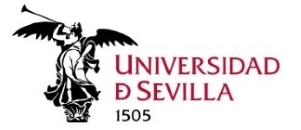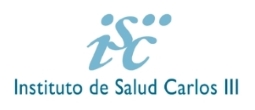- The study reveals molecular mechanisms in the rare disease known as adult-onset neuronal ceroid lipofuscinosis and opens new avenues for therapy development.
Seville, May 21st, 2025
A research team at the Institute of Biomedicine of Seville (IBiS), led by Dr. Rafael Fernández-Chacón, has developed and analyzed the first genetic mouse model for studying adult-onset neuronal ceroid lipofuscinosis, also known as CLN4 or Kufs disease. This important advance comes exactly one hundred years after this rare and hereditary disease was first described by German neurologist Friedrich H. Kufs. The study uncovers key aspects of how mutations in a neuronal protein affect the brain, providing a valuable tool for future research into the disease's pathophysiology and potential treatments.
As the brain ages, neurons normally accumulate a pigment called lipofuscin. However, the early pathological accumulation of lipofuscin is characteristic of a group of rare hereditary diseases known as neuronal ceroid lipofuscinoses (NCLs), which typically lead to neurodegeneration in children. The disease described by Kufs in 1925, however, manifests only in young adults and is associated with mutations in the DNAJC5 gene, which encodes the CSPα protein found in nerve terminals. Although these human mutations were identified in 2011, the underlying mechanisms remained unclear due to the lack of an appropriate mammalian animal model.
This new study, published in Science Advances, provides a key insight into the disease by showing that mice expressing the mutated versions of the CSPα protein develop neurological impairments linked to the pathological accumulation of lipofuscin in neurons. Interestingly, mice that completely lack CSPα do not develop lipofuscinosis, suggesting that Kufs disease arises from a toxic effect of the mutated protein rather than from a simple loss of its normal function. This discovery builds on previous work by the same IBiS team, which had contributed to demonstrate the role of CSPα in maintaining and protecting nerve terminals.
“For the first time, we have a mouse model that replicates the neuronal pathological signature of Kufs disease or CLN4. This opens new pathways not only to better understand the disease mechanisms but also to design and test new therapies,” said Dr. Rafael Fernández-Chacón, the study’s director. Dr. Santiago López Begines, co–first author, emphasized that “these mice will be very useful for identifying the molecular cascades altered by the disease.” Co–first author Dr. Nozha Borjini added, “We will also be able to study the role of immune cells in the brain in clearing pathological lipofuscin.”
The “Molecular Physiology of the Synapse” group, led by Dr. Fernández-Chacón, is affiliated with the Institute of Biomedicine of Seville (IBiS, University Hospital Virgen del Rocío / CSIC / University of Seville), the Department of Medical Physiology and Biophysics at the School of Medicine and the Network Center for Biomedical Research in Neurodegenerative Diseases (CIBERNED ISCIII). The group is also part of the CSIC Rare Diseases Network (RER CSIC).
The study also involved collaborators from Vrije Universiteit Amsterdam and the University of Castilla-La Mancha and it was possible thanks to the research support services of IBiS and the University of Seville (CITIUS and CEA Óscar Pintado).
The project was primarily funded by the Spanish State Research Agency (AEI) of the Ministry of Science, Innovation, and Universities (MICIU), the European Union’s EDFR funds, the Andalusian Consejería of Universities, Research and Innovation (CUII), the Andalusian Consejería of Health and Consumption (CSyC) and the Institute of Health Carlos III, through CIBERNED and FORTALECE.
Referencia: López-Begines, Borjini et al., Sci. Adv. 11, eads3393 (2025)
https://www.science.org/doi/10.1126/sciadv.ads3393
DOI: 10.1126/sciadv.ads3393
From left to right: Co-first authors Dr. Santiago López-Begines and Dr. Nozha Borjini, together with the study director Prof. Rafael Fernández-Chacón, presenting key pathological features observed in the Kufs disease/CLN4 mouse model.
----------
About IBiS
The Institute of Biomedicine of Seville (IBiS) is a multidisciplinary research center dedicated to advancing fundamental understanding of both highly prevalent and rare diseases. Its mission is to investigate the underlying causes and mechanisms of these conditions and to develop innovative methods for their diagnosis and treatment.
IBiS is made up of 41 consolidated research groups and 39 affiliated groups led by researchers from the University of Seville, the Spanish National Research Council (CSIC), and the University Hospitals Virgen del Rocío, Virgen Macarena, and Virgen de Valme. These groups are organized around five thematic areas: Infectious and Immune System Diseases, Neurosciences, Onco-Hematology and Genetics, Cardiovascular and Respiratory Pathology / Other Systemic Diseases, and Liver, Digestive, and Inflammatory Diseases.
IBiS is institutionally supported by the Andalusian Consejería of Health and Consumption (CSyC), the Andalusian Service of Health (SAS); the Andalusian Consejería of Universities, Research and Innovation (CUII); the University of Seville; and the Spanish National Research Council (CSIC). IBiS is managed by the Foundation for the Management of Health Research of Seville (FISEVI).
For more information:
Angeles Escudero
Unidad de comunicación| UCC+i
InstitutodeBiomedicinadeSevilla - IBiS
Campus Hospital Universitario Virgen del Rocío
Avda. Manuel Siurot s/n
41013 Sevilla
Tel 682730351
Email: comunicacion-ibis@us.es














